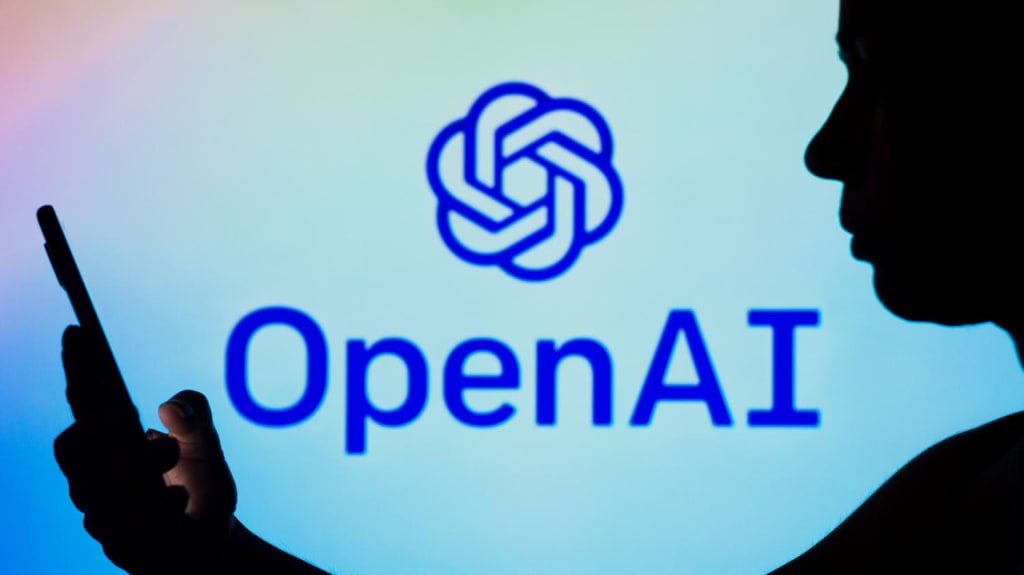
HISTORY OF ChatGPT :
• ChatGPT is a state-of-the-art language model developed by OpenAI. The model is based on the GPT (Generative Pre-training Transformer) architecture and is trained on a massive amount of text data to generate human-like responses in natural language.
• The history of ChatGPT, a large language model developed by OpenAI, can be traced back to the early days of artificial intelligence research. The field of AI has come a long way since the 1950s, when pioneers such as Alan Turing and John McCarthy first began exploring the possibilities of creating machines that can think and learn like humans.
• In the decades that followed, researchers made significant progress in developing AI systems that could perform tasks such as image recognition, speech recognition, and natural language processing. However, these systems were still far from being able to understand and generate human-like language.
• That began to change in the 2010s, with the advent of deep learning and neural networks. These techniques allowed researchers to train large, complex models on massive amounts of data, which in turn led to significant improvements in natural language processing.
• In 2018, OpenAI released the first version of GPT (Generative Pre-trained Transformer) which was trained on a massive dataset of internet text and was able to generate human-like text. This model was able to perform a wide range of natural language tasks such as language translation, summarization, and question answering.
• Following the success of GPT, OpenAI developed a version of the model specifically designed for conversational AI, called ChatGPT. This model was trained on a dataset of conversational text and is able to understand and respond to questions and prompts in a way that is similar to how a human would.
• Since its release, ChatGPT has been used in a wide range of applications, from customer service chatbots to virtual assistants. Its ability to understand and generate human-like language has made it a powerful tool for creating more natural and human-like interactions between machines and humans.
• In conclusion, the history of ChatGPT is a testament to the rapid progress that has been made in the field of AI in recent years, and it is a glimpse of how much more is yet to come. As the AI technology continues to advance, the potential uses and applications of ChatGPT and other large language models will only continue to grow.
Interesting features :
ChatGPT, a large language model developed by OpenAI, has several interesting features that make it well suited for conversational AI applications. Some of these features include:
1. Human-like language generation: One of the most notable features of ChatGPT is its ability to generate human-like text. This allows it to respond to prompts and questions in a way that is similar to how a human would, making interactions with the model more natural and intuitive.
2. Contextual understanding: ChatGPT is able to understand the context of a conversation and use that information to generate more appropriate responses. This allows it to maintain coherence and continuity in a conversation and respond to follow-up questions.
3. Multi-turn dialogue: ChatGPT is able to engage in multi-turn dialogues, which allows it to hold more complex and nuanced conversations.
4. Personalization: ChatGPT can be fine-tuned with specific conversational data to make the model more personalized and relevant to a particular application or use case.
5. Flexibility: ChatGPT is a general-purpose conversational AI model, which means it can be used for a wide range of tasks and applications, such as customer service chatbots, virtual assistants, and more.
6. Integration: ChatGPT can be integrated with other systems, such as natural language understanding (NLU) and dialogue management (DM) tools, to create more advanced conversational AI systems.
These features of ChatGPT make it a powerful tool for creating more natural and human-like interactions between machines and humans, which is why it is widely used in various applications.
Upcoming developments:
There are several ongoing developments in the field of ChatGPT and large language models that are worth noting. Some of these include:
1. Improved language understanding: Researchers are working to improve the ability of ChatGPT and other models to understand the nuances and subtleties of human language. This includes developing models that can better understand context, idiomatic expressions, and sarcasm.
2. Multi-language support: Many large language models, including ChatGPT, are currently only trained on a single language. However, there is ongoing research to develop models that can understand and generate text in multiple languages.
3. Personalization: Some researchers are exploring ways to personalize ChatGPT and other models by fine-tuning them on specific individuals or groups of people. This could allow the models to better understand the unique characteristics and preferences of different users.
4. Human-like conversational AI: With the advancements in natural language processing, researchers are aiming to create more human-like conversational AI by incorporating features like empathy, emotional intelligence, and social awareness.
5. Combining with other technologies: Researchers are also experimenting with combining ChatGPT and other large language models with other technologies like computer vision, speech recognition, and robotics to create more advanced AI systems.
6. Explainable AI: There is also a growing need for explainable AI, particularly when it comes to natural language models, since it is difficult to understand how these models arrive at their predictions. Researchers are working on techniques to make these models more interpretable, and to provide explanations for their decisions.
These are just a few examples of the ongoing developments in the field of ChatGPT and large language models, and it is likely that many more exciting advancements will be made in the coming years.
ChatGPT vs Google :
ChatGPT and Google are both powerful technologies that have the ability to understand and generate natural language, but they are designed to serve different purposes and have different capabilities.
Google is a search engine that is designed to help users find information on the internet. It uses complex algorithms to index and rank billions of web pages, and it provides users with a wide range of tools and services, such as search suggestions, autocomplete, and voice search.
ChatGPT, on the other hand, is a language model that is designed to understand and generate natural language. It can be used to create chatbots, virtual assistants, and other conversational AI applications.
ChatGPT can be fine-tuned on specific tasks such as answering questions, summarizing, or even writing creative text. While Google can provide a wide range of information but it does not have the ability to generate text like ChatGPT does.
Additionally, ChatGPT is more of a closed-domain AI model, which means it is trained on a specific dataset and could have limitations when answering questions or generating text outside of its training domain. Google on the other hand is an open-domain AI model and search engine, which means it can provide information on a wide range of topics.
In conclusion, ChatGPT and Google are both powerful technologies, but they are designed to serve different purposes. While ChatGPT excels in understanding and generating natural language, Google excels in searching and providing information on the internet. Both technologies will continue to evolve and improve in the future.
Disadvantages of ChatGPT :
ChatGPT, like any other technology, has certain limitations and disadvantages. Some of the main disadvantages of ChatGPT include:
1. Limited understanding of context: ChatGPT, like many other large language models, can have difficulty understanding the context of a conversation or text. This can lead to confusion or misinterpretation of the intended meaning.
2. Bias: ChatGPT is trained on large amounts of text data, which can introduce bias into the model. This can manifest in various ways, such as gender, racial or socioeconomic bias.
3. Lack of common sense: ChatGPT does not have the ability to understand common sense or make inferences based on general knowledge, which can limit its ability to understand and respond to certain types of questions or statements.
4. Limited explainability: ChatGPT is a complex model that generates text based on patterns it has learned from the training data. It can be difficult to understand how the model arrived at a particular prediction, which can be a problem when the model is used in sensitive applications.
5. Requires large amounts of data and computational resources: Training ChatGPT and other large language models requires large amounts of data and computational resources. This can be a barrier for some organizations or individuals who do not have access to these resources.
6. Limited to closed-domain: ChatGPT is trained on a specific dataset and could have limitations when answering questions or generating text outside of its training domain. This makes it less versatile and could limit its application in certain situations.
7. Requires fine-tuning for specific tasks: ChatGPT is a general-purpose language model, it requires fine-tuning on a specific task or domain to improve its performance.
In conclusion, ChatGPT is a powerful technology with many potential applications, but it does have certain limitations and disadvantages that must be taken into consideration when using it. While it's not a perfect technology, its capabilities are still impressive and researchers are working on improving its performance and addressing its limitations.
About the Creator
Leo
"A professional writer is an amateur who didn't quit" - Richard Bach






Comments
There are no comments for this story
Be the first to respond and start the conversation.